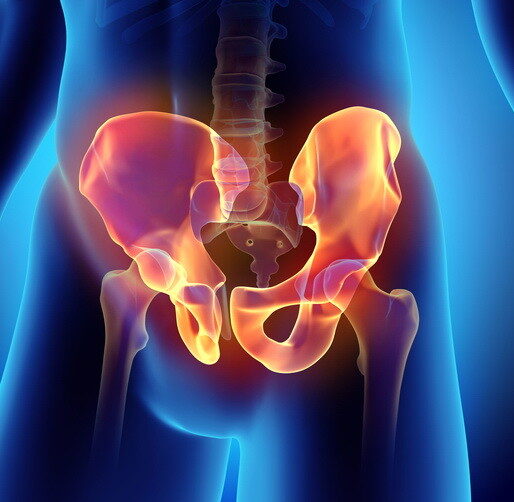Anyone involved in a vehicular collision could suffer from pelvic pain resulting from a car accident. If you have these symptoms, talk to one of our Eason & Tambornini personal injury lawyers for help with the legal process. Our lawyers can help you understand why you have pelvic pain from the car accident, how to recognize pelvic fracture symptoms, the recovery time of fracture pelvis, and some of the pelvic fracture treatments. If you have any questions about pelvic injuries resulting from another driver’s carelessness, please do not hesitate to contact us and we’ll help you with your legal needs.

There are different ways car collisions can cause pelvic injuries. Firstly, when another vehicle hits the side of your car, the blunt force trauma could cause your hip to ram against the side of your car.
Secondly, your seat belt can also cause pelvic injuries as it tries to keep you in place. The force from the collision and the pressure from the seat belt could cause bruising and even pelvic fractures.
Thirdly, dashboard debris could also cause hip injuries – the airbag deploying and you ramming into it, head-on collisions pushing car parts like the dashboard and steering wheel against your body, rear-end collisions causing you to slam hard against the dashboard.
All these can cause bruising and swelling of the pelvis region, tearing of the pelvic muscles and ligaments, and pelvic bone fractures.
The most immediate sign that you may have a pelvic fracture is extreme pain and tenderness in the pelvic region. Even gentle palpation could elicit pain.
Other symptoms include bruising over the pelvic area with swelling. There may also be abnormal sensations like numbness and tingling that spreads to the genital area and may even radiate down the leg. These symptoms are indicative of impinged nerves from the pelvic fracture.
Finally, there will be pain and discomfort when you sit and walk. Pain may also be present when you walk or even have bowel movements.
Symptoms that you need to watch out for and need immediate medical attention are rectal bleeding, hematuria or blood in the urine, or vaginal bleeding in women. These could be signs of more extensive damage like internal bleeding or injuries of vital organs.
Although most pelvic fractures do not require surgery, the recovery time for a fractured pelvis still depends upon the severity of the victim’s injuries, type of fracture, location of the fracture, and associated pelvic injuries.
A simple pelvic fracture usually heals on its own, with the pelvic muscles, tendons, ligaments, and local tissues keeping the fractured bone pieces together. Clean breaks in the pelvic bone with no other associated injuries usually start healing about a month after the accident. In fact, some patients even notice less pain just a few days after the injury.
Unfortunately, older individuals and people with bone problems or other medical illnesses tend to recover for a longer duration. Underlying medical conditions and a weak immune system could exacerbate the injuries and prolong the recovery period.
Most car collision victims with a fractured pelvis are usually pain-free with full mobility by the end of six weeks to twelve weeks.
Laboratory and imaging studies will diagnose pelvic fractures and other associated pelvic injuries. These include physical examination, blood tests, x-rays, CT scans, and MRIs. It’s important to undergo these tests to rule out life-threatening injuries.
Pelvic fracture treatment includes analgesics for pain control, anti-inflammatory medications to reduce inflammation, anticoagulants to prevent the development of deep vein thrombosis, bed rest to promote healing, immobilization (like casting) to limit movement and prevent worsening of the fracture, and crutches and other ambulatory devices to limit weight-bearing activities on the pelvic region and aid in ambulation.
Extensive pelvic fracture and injuries may require surgery. These may include internal fixation, such as metal pins and screws to keep the pelvic bones together.
You may also need physical therapy to manage pain, strengthen muscles, gait retraining, and prevent any limited range of motion.
What can you do?
Unfortunately, there are treatment methods that some insurance companies do not cover. If they do cover them, they’ll try to reduce the coverage amount. To get the best treatment, you often will have to pay out of your own pocket.
If another driver’s negligence caused the car collision, you need to know that you can file a personal injury suit against them. Our lawyers will explain how you developed pelvic pain from a collision, the symptoms of pelvic fractures, the recovery period of pelvic fractures, and treatments for pelvic fractures. We will help compute the just compensation for your pain, suffering, and expenses as well as filing suit. Our car accident attorneys in Sacramento are only a call or message away, so get in touch if you’re having pelvic pain from a car accident.

